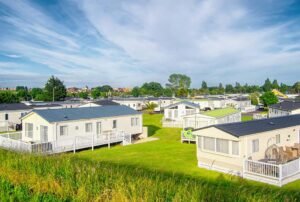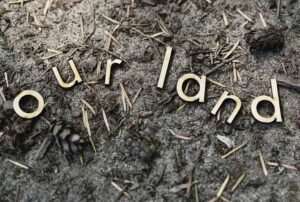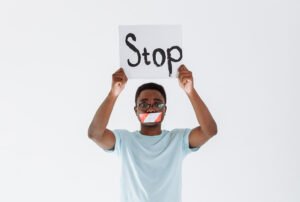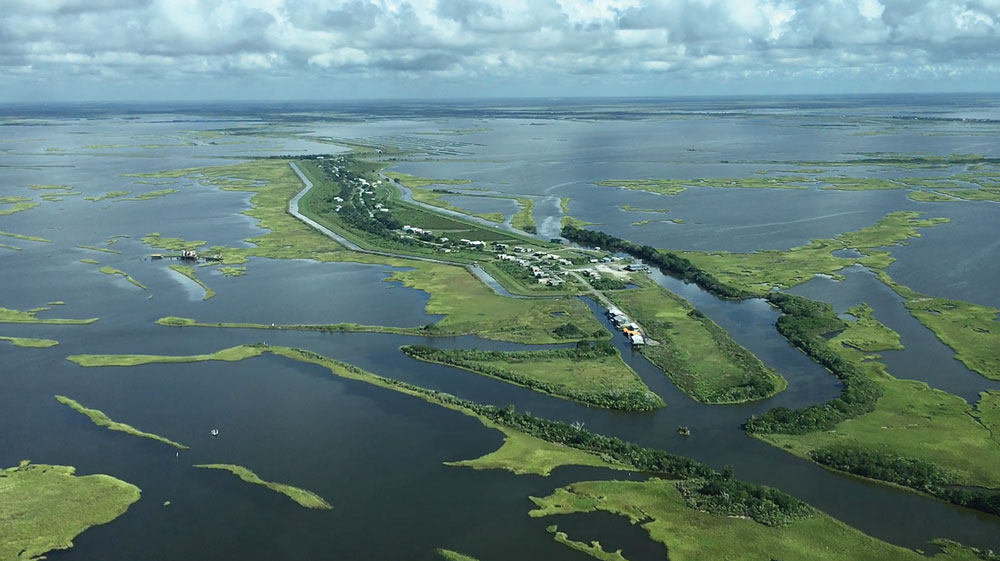
This article from the fall 2020 edition of the Nonprofit Quarterly is part of a series of works on the subject of environmental justice and Indigenous communities in the United States, curated by Raymond Foxworth of the First Nations Development Institute. You can read others here, here, here, and here, and after that, watch a webinar hosted by Senior Editor Steve Dubb on the topic, featuring three of the authors.

“Levees built along the Mississippi River after the [1928 Flood Control Act] stopped freshwater floods that had kept the marsh alive and the land elevated with fresh, fertile sediment…. Around the same time the road was planned, oil companies took interest in the land the government had called ‘uninhabitable swamp’ until 1876 and cut canals around the island. The influx of saltwater killed the marsh grasses. Trees that once offered shelter from hurricane-force winds were turned a skeletal white by the salt…. From then, years became measured in hurricanes and floods.”1
It’s a beautiful warm morning in south Louisiana, as I travel down to my home, Isle de Jean Charles—“The Island.” The water gently laps onto the road as the tide moves inland. The oak trees make a canopy of shade over the paved road leading to what’s left of the Tribal members’ homes. Reaching my destination, my ninety-year-old grandpa meets me on the raised porch with a hug. The warm saltwater breeze blows as we sit swinging; there is a smell of fragrant coffee brewing for the three o’clock gathering on the porch. We begin talking about the old days, while forever preserving this moment in time.
Preserving a moment in time has different meanings for everyone. Using the five senses helps to create a memory. Throughout time, there are days when we remember exactly where we were and the events surrounding them: Pearl Harbor, December 7, 1941; the John F. Kennedy assassination, November 22, 1963; World Trade Center, September 11, 2001. Just as these moments were of deep national impact, so this moment is of deep impact for our Tribal nation. Preserving a place, whether physically, historically, or emotionally, usually comes about through great loss—as is the case with Isle de Jean Charles.
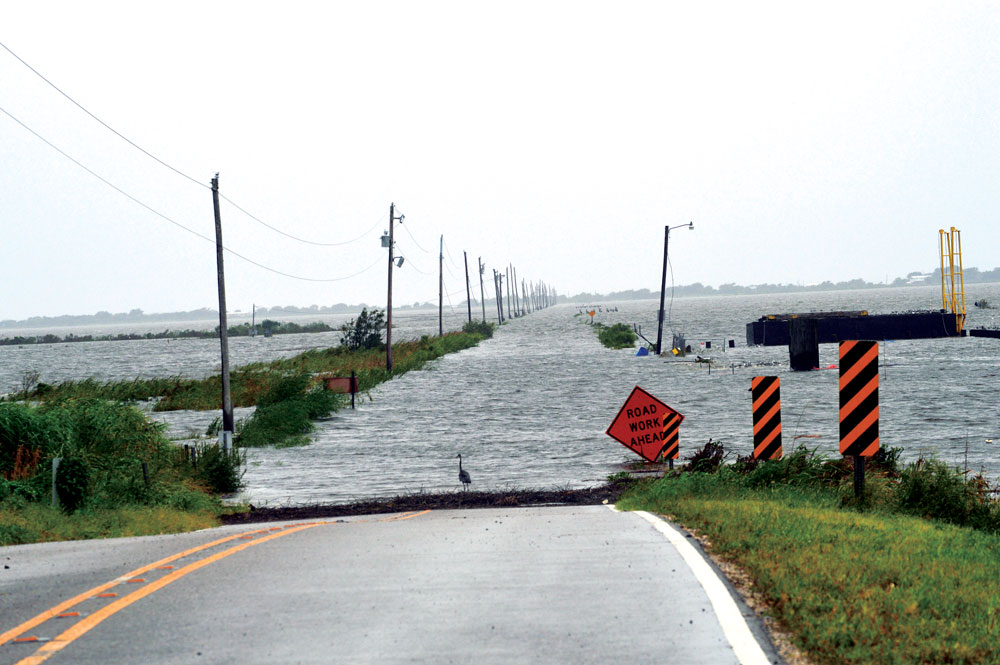
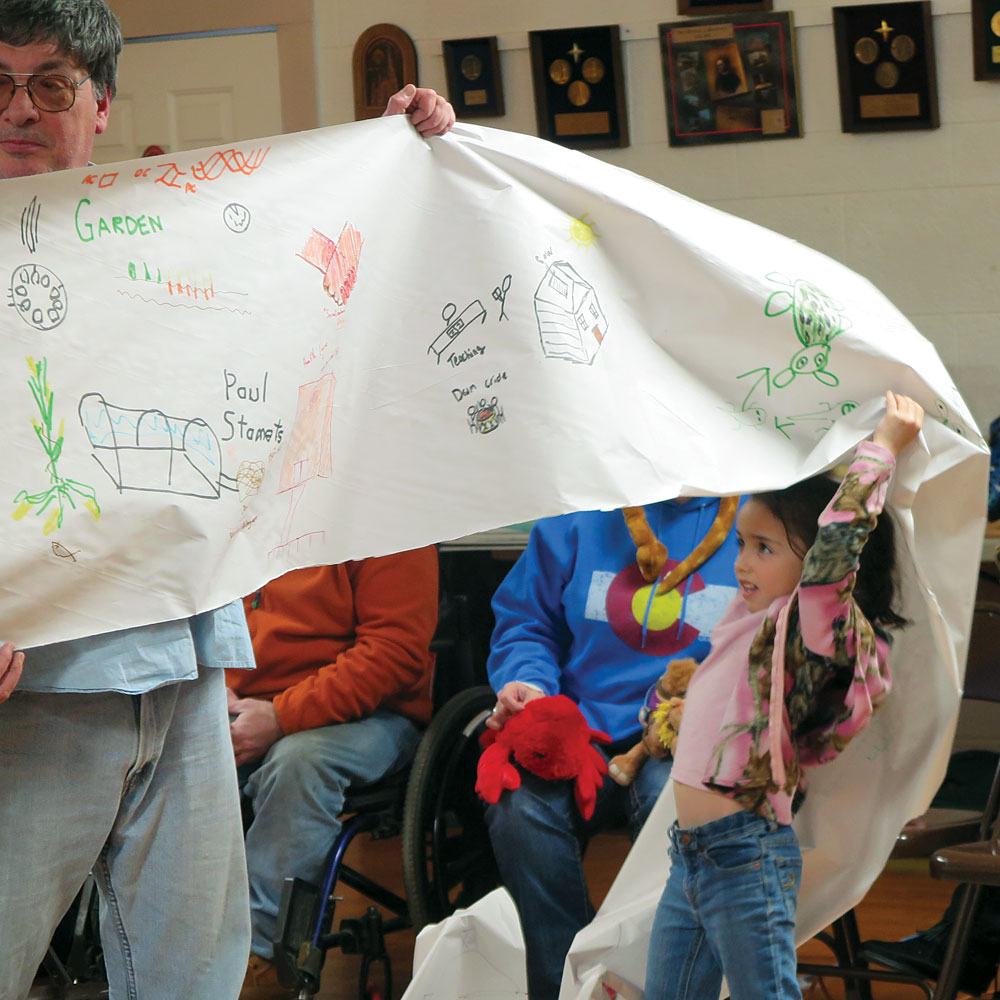
Isle de Jean Charles is a small ridge of land in southern Terrebonne Parish, Louisiana. “The Island,” as locals call it, is home to the Isle de Jean Charles (IDJC) Biloxi-Chitimacha-Choctaw Tribe of Louisiana. The IDJC Tribe settled the Island in the early 1800s, having been pushed into “uninhabitable” lands by European settler colonialism, slavery, and social inequality.2
The IDJC Tribe adapted to the changes of living on a secluded island, one accessible only by boat,3 living solely off the land and surrounding waters. Soon after settling, the Tribe began farming rice and corn and raising cattle to provide for their families. The Tribal children were denied public education until 1952. In the 1930s, a missionary school was developed on the mainland, in Pointe-aux-Chênes, to which the children went by pirogue; and in the 1940s the Baptist Mission built a church on the Island, which was used as a school.4
The “Island Road” connecting the Island to Pointe-aux-Chênes was built in 1953, opening the IDJC Tribe to a new world. Crossing the marshland, and wide open to erosion and flooding, this narrow roadway is considered to be both vulnerable and to have added to the erosion of the island.5 Since 1955, the Island has experienced a 98 percent erosion rate, causing mass changes to Island life. Family homes have flooded and been destroyed by hurricanes.6 In 2011, the road underwent restoration and elevation, and the Tribe was told this would be the final fix. Since 2017, the road has regularly flooded due to the increasingly extreme weather patterns.7
Despite all these troubles, the IDJC Tribe has enjoyed generations of bountiful provision from the Island from seafood, agriculture, livestock, and trapping, and the Island has been rich in Native traditions and culture. But our Island is now unable to sustain life fully for our entire IDJC Tribe, because of climate change: sea level rise, environmental disasters, and subsidence due to levees on the Mississippi River.8
The IDJC Tribe has slowly begun to leave the Island due to loss of houses, loss of work, and repeated flooding, starting with Hurricane Carmen in 1974.9 With each storm, more families have left. Hurricane Lili, in 2002, brought the greatest loss—over fifty families, due to severe flooding and damage.10 As a result, we are separated, displaced, and losing the ways in which we transfer our knowledge.
Grandparents and Elders are not spending daily time with the children. Younger families are choosing to move off the Island for sustainability. We are losing our survival skills, our sustainable ways of living with and off the land and marsh. The fisheries are not producing the same quality and quantity of catch as decades before. Marsh grasses are dying, and the estuaries are becoming more salt based. Additionally, crude oil from the 2010 Deepwater Horizon Oil spill disgorged into our marsh, closing off our traditional fishing grounds and forcing young folks to change careers in order to provide for their families.11
Sign up for our free newsletters
Subscribe to NPQ's newsletters to have our top stories delivered directly to your inbox.
By signing up, you agree to our privacy policy and terms of use, and to receive messages from NPQ and our partners.
The crafts, traditions, and how we live together with what is around us are disappearing. Basket weaving, which has been a strong connection to our ancestors, is declining—only a handful of Elders are still able to engage in the craft. Our lifeways that make the IDJC Tribe who we are have been cut off. Our younger generations are no longer here to learn from the Elders. The slow exodus of people forced to leave has caused a rift blocking our natural flow of history and cultural transfer.12
We have long held hopes of reuniting our IDJC Tribe in a safe, sustainable, new community, and putting our traditions and culture back together. In 2000, and then in 2002, Tribal council members advocated for the U.S. Army Corp of Engineers and local government officials to help our Tribe overcome the changes. Attempts to help our Tribal citizens move were stalled, due to outside forces and social injustice;13 but continued planning for resettlement and to reunite the Tribe proved to be helpful when the state of Louisiana applied for the Housing and Urban Development National Disaster Resilience Grant in 2015, which included our Tribal Resettlement plan, and then when the state of Louisiana was awarded a grant of $48 million in 2016 to build our envisioned resettlement.14 However, we envision our Tribal resettlement as a living and active bridge to our ancestral Island. Our relationships, ways of life, and identity will be supported by a community center, a museum, and gatherings on acreage inland—all toward the entire Tribe moving back together.15
But that hope to breathe Spirit into our Tribe has dwindled, due to the state of Louisiana’s slow response and improper execution of the Housing and Urban Development National Disaster Resilience Grant. In the last significant amendment,16 the state made it clear that the IDJC Tribe was no longer a beneficiary of nor involved in the grant process.17
The grant did not turn out to be the catalyst for recreating the self-sustaining society we once loved, but we remain committed to our vision. The Tribe has invested in “Preserving Our Place,” a movement to preserve the Island and the IDJC Tribe’s long legacy of traditions, culture, and history.18 In November 2019, the IDJC Tribal Council approved the first Tribal Museum Policy. The establishment of our own Tribal Museum and Culture Center, the first step to realizing our goals, has many moving parts. Community gardens, storytelling activities, craft demonstrations, and historical exhibits are just the tip of the iceberg.
The effort to ensure that the Island does not erode and the IDJC Tribe does not erode along with it is the most important piece of this puzzle. For a displaced, impoverished, and marginalized community, the means to undertake such a task are minimal.
Thinking of the vast undertaking, for guidance—ironically—I look to the Declaration of Independence and the U.S. Constitution, whose Preamble begins, “We the People.” In order to fully accomplish our goal, we, the people of the Tribe, the community, and the country must ensure that the communities facing climate migration and resettlement are fully resourced. Communities dealing with these grave climate conditions need everyone to rally behind their vision to ensure the preservation of their place, and come alongside them in solidarity.
The solidarity should include everyone, from the federal government to philanthropy. The Government Accountability Office issued a report in July 2020, stating, “We recommended Congress consider establishing a federally-led pilot program to help communities interested in relocation.”19 The report, which accurately covers the IDJC Tribe’s resettlement process, clearly states that there are many complex problems with the current resettlement plan.
So how do we help come alongside the Isle de Jean Charles Tribe and other communities to accomplish their vision? I am so glad you asked! We welcome support in a variety of ways: monetary, physical, and emotional. Following our story on our website, www.isledejeancharles.com, and on Facebook is a great start. Many news stories are published about the communities dealing with climate change, and not all of them are factual or tell the real story—contact community leaders to learn of their most pressing needs. Finally, meaningful monetary support and capacity-building grant opportunities are crucial. In our case, the Preserving Our Place project needs to build capacity to get the project up and running. Archival space, equipment, funding, and a building are some of the immediate challenges we are facing.
Seed money, when we invest in communities that are fighting for self-preservation, is sown into good soil that will yield a return well beyond the initial investment. I challenge each reader to ask themself: “What have I been sowing into?”
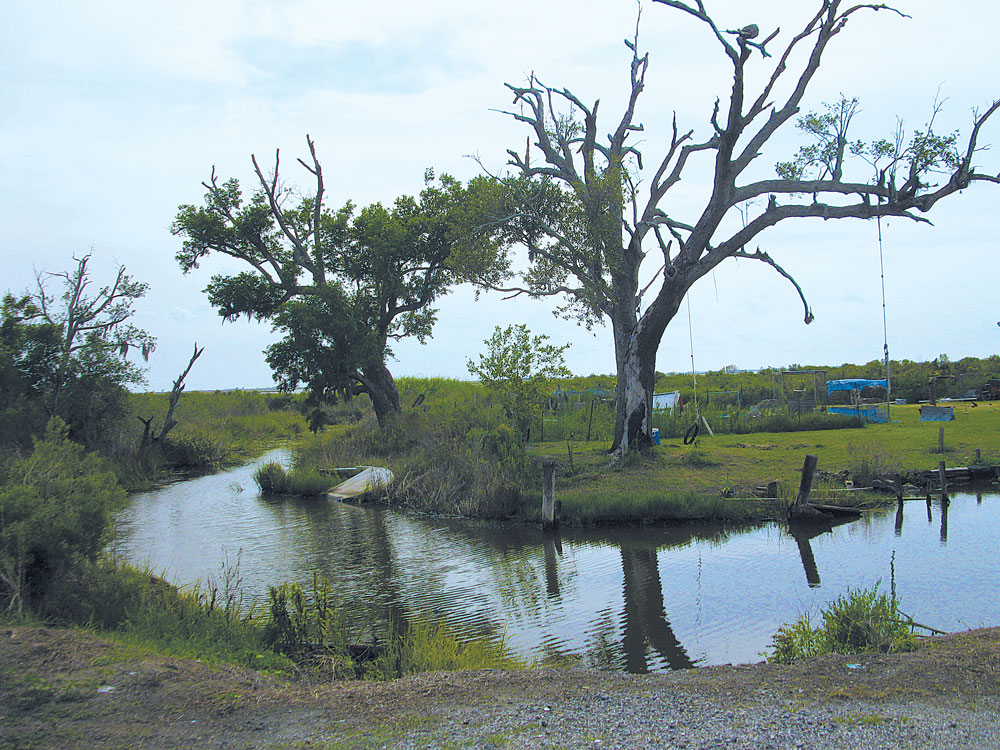
Notes
- Andrew J. Yawn, “As Gulf swallows Louisiana island, displaced tribe fears the future,” The American South, Daily Advertiser, updated March 3, 2020.
- “The Island,” Bienvenue, Halito, Welcome to Isle de Jean Charles, accessed August 17, 2020, www.isledejeancharles.com/island.
- “Isle de Jean Charles wasn’t always an island. Residents who didn’t want to row a pirogue—a flat-bottomed canoe—across the water to nearby town Pointe Aux Chênes could take the wagon trail through the marsh if the tide wasn’t high,” from Yawn, “As Gulf swallows Louisiana island, displaced tribe fears the future.”
- See “Education,” www.isledejeancharles.com/island.
- See “The Road,” www.isledejeancharles.com/island.
- Robynne Boyd, “The People of the Isle de Jean Charles Are Louisiana’s First Climate Refugees—but They Won’t Be the Last,” Natural Resources Defense Council (NRDC), September 23, 2019.
- “The Road,” www.isledejeancharles.com/island.
- “Land Loss,” Restore the Mississippi River Delta, accessed August 21, 2020.
- Boyd, “The People of the Isle de Jean Charles Are Louisiana’s First Climate Refugees.”
- Yawn, “As Gulf swallows Louisiana island, displaced tribe fears the future.”
- Chelsea Harvey, “The gulf oil spill literally caused wetlands to sink beneath the waves, scientists say,” Washington Post, November 21, 2016.
- For more on the history of Isle de Jean Charles, see Andrew Yawn, “Why is Isle de Jean Charles disappearing? A timeline of land loss,” The American South, Daily Advertiser, updated March 1, 2020.
- The community the Tribe was looking to move into protested the development. See “Terrebonne officials visit Isle de Jean Charles,” Houma Today, October 19, 2009; and Charquia Wright, “Unmasking Western Science: Challenging the Army Corps of Engineer’s Rejection of the Isle de Jean Charles Tribal Environmental Knowledge under APA Arbitrary and Capricious Review,” UCLA Law Review, March 26, 2020.
- Coral Davenport and Campbell Robertson, “Resettling the First American ‘Climate Refugees,’” New York Times, May 2, 2016.
- See “Tribal Resettlement,” accessed August 21, 2020.
- Louisiana Office of Community Development-Disaster Recovery Unit, State of Louisiana Substantial Amendment No. 5: Introduction of New Activities and Project Narrative Clarifications for the Utilization of Community Development Block Grant Funds Under the National Disaster Resilience Competition (NDRC) Resettlement of Isle de Jean Charles, Disaster Recovery Initiative, U.S. Department of Housing and Urban Development, submitted to HUD: April 23, 2019.
- “[T]he planned resettlement of Louisiana’s Isle de Jean Charles Biloxi-Chitimacha-Choctaw Tribe, whose ancestral island has nearly disappeared, has been mired in a conflict over tribal sovereignty. The tribe’s leaders say they’re not being treated as co-collaborators—in fact, they learned about the state’s purchase of land for resettlement by reading a press release. State officials say they have tried to work with those leaders but are ‘not in a legal position’ to acknowledge the sovereignty of a tribe that is not federally recognized” (Barry Yeoman, “As Sea Level Rise Threatens Their Ancestral Village, a Louisiana Tribe Fights to Stay Put,” Natural Resources Defense Council [NRDC], April 13, 2020). And see Julie Dermansky, “Isle de Jean Charles Tribe Turns Down Funds to Relocate First US ‘Climate Refugees’ as Louisiana Buys Land Anyway,” DeSmog (blog), January 11, 2019; and Julie Dermansky, “Critics Say Louisiana ‘Highjacked’ Climate Resettlement Plan for Isle de Jean Charles Tribe,” DeSmog (blog), April 20, 2019.
- “Preserving Our Place” (project and website page in process), accessed August 21, 2020.
- “CLIMATE CHANGE: A Climate Migration Pilot Program Could Enhance the Nation’s Resilience and Reduce Federal Fiscal Exposure,” U.S. Government Accountability Office, July 6, 2020, gao.gov/products /GAO-20-488.



